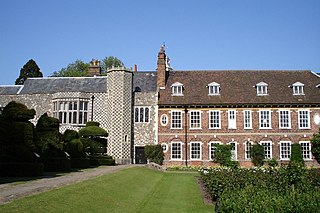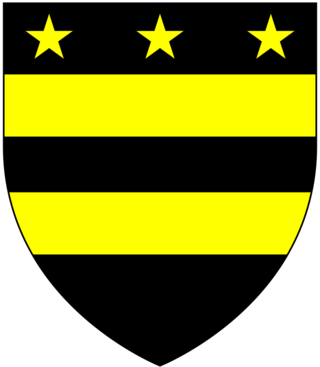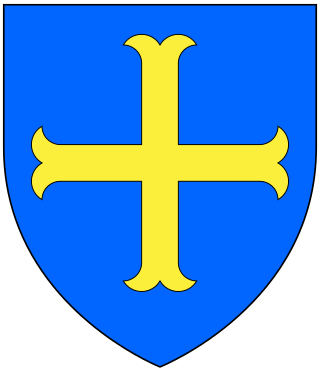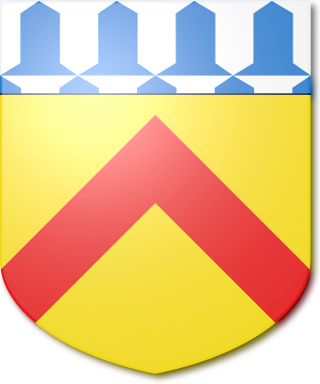Related Research Articles

David Boyle, 1st Earl of Glasgow was a Scottish politician and peer. He was the last Treasurer-depute before the Union with England.
There have been three baronetcies created for members of the Anstruther family, two in the Baronetage of Nova Scotia and one in the Baronetage of Great Britain. Two of the creations are extant while one is extinct.
Nineteen baronetcies have been created for persons with the surname Hamilton, eight in the Baronetage of Nova Scotia, one in the Baronetage of England, five in the Baronetage of Ireland, one in the Baronetage of Great Britain and four in the Baronetage of the United Kingdom. As of 2008 two creations are extant, two are dormant, two are either extinct or dormant and twelve extinct.

There have been two Baronetcies created for persons with the surname Austen, one in the Baronetage of England and one in the Baronetage of Great Britain. Both creations are extinct.
Sir George Fletcher, 2nd Baronet was an English politician who sat in the House of Commons at various times between 1661 and 1700.
There have been nine baronetcies created for persons with the surname Lloyd, three in the Baronetage of England, three in the Baronetage of Great Britain and three in the Baronetage of the United Kingdom. Two of the creations are extant as of 2010.
Three baronetcies were created for persons with the surname D'Oyly, two in the Baronetage of England and one in the Baronetage of the United Kingdom. One creation is extant as of 2008.

There have been two baronetcies created for persons with the surname Freke, one in the Baronetage of Great Britain and one in the Baronetage of Ireland.

There have been three baronetcies created for descendants of the ancient Norman family of Molyneux who were granted extensive estates in Lancashire after the Norman Conquest.
There have been two baronetcies created for the Pye family. Both are now extinct.
There have been three baronetcies created for persons with the surname Maitland, two in the Baronetage of Nova Scotia and one in the Baronetage of the United Kingdom. Two of the creations are extant as of 2008 while the other is either dormant or extinct.

There have been three baronetcies created for members of the Dixwell family, all of whom are descended from Charles Dixwell of Coton House, near Churchover, Warwickshire. All three baronetcies are extinct.
There have been two baronetcies created in the Baronetage of England for members of the Colepeper family of Kent and Sussex. Both are extinct.
Sir William Mure of Rowallan (1594–1657) was a Scottish writer and politician.
The Blackwell Baronetcy, of Sprowston in the County of Norfolk, was a title in the Baronetage of Great Britain.
The Westcombe Baronetcy, of Cadiz in Spain, was a title in the Baronetage of England. It was created on 23 March 1700 for Martin Westcombe, English Consul at Cádiz, Spain. The title became extinct on the death of the second Baronet in 1752.

The Keate Baronetcy, of The Hoo in the County of Hertford, was a title in the Baronetage of England. It was created on 12 June 1660 for Jonathan Keate, subsequently Member of Parliament for Hertfordshire. The title became extinct on the death of the fourth Baronet in 1757.

The Tipping Baronetcy, of Wheatfield in the County of Oxford, was a title in the Baronetage of England. It was created on 24 March 1698 for Thomas Tipping, Member of Parliament for Oxfordshire and Wallingford. He was the second son of Sir Thomas Tipping and the great-nephew of the religious writer William 'Eternity' Tipping. The title became extinct on the death of the second Baronet in 1725.

The St Quintin Baronetcy, of Harpham in the County of York, was a title in the baronetage of England. It was created on 8 March 1642 for William St Quintin. The third Baronet sat as Member of Parliament for Kingston upon Hull. The fourth Baronet was Member of Parliament for Thirsk. The title became extinct on the death of the fifth Baronet in 1795. The family estate of Scampston Hall was passed on to the late Baronet's nephew, William Thomas Darby, the son of Vice-Admiral George Darby, who assumed the surname and arms of St Quintin.

The Gardiner Baronetcy, of Roche Court in the County of Southampton, was a title in the Baronetage of England. It was created on 24 December 1660 for Sir William Gardiner, Member of Parliament for Wigan. The second Baronet was a Commissioner of the Stamp Office from 1713 until 1739. The title became extinct on the death of the third Baronet in 1779. The late Baronet left his estates to his cousin John Whalley, of Tackley, Oxfordshire, who assumed the additional surname of Gardiner and was created a baronet, of Roche Court in the County of Southampton, in 1783. See Whalley-Smythe-Gardiner baronets for further history of this title.
References
- ↑ John Burke, Bernard Burke, 'Mure, of Rowallan' in A Genealogical and Heraldic History of the Extinct and Dormant Baronetcies of England, Ireland and Scotland (1844), p.633.